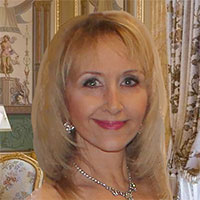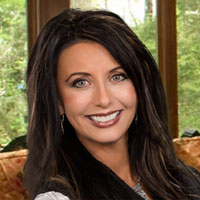Grasping the Importance of Releasing: Delving into Spiritual Insights
 Occasionally, I provide readings for individuals who feel the necessity to control every aspect of their lives. They are seldom relaxed, seldom joyful, and always tense. There’s an unending pressure surrounding them, a tangible anxiety, as if they are perpetually on the brink of a collapse or total breakdown.
Occasionally, I provide readings for individuals who feel the necessity to control every aspect of their lives. They are seldom relaxed, seldom joyful, and always tense. There’s an unending pressure surrounding them, a tangible anxiety, as if they are perpetually on the brink of a collapse or total breakdown.
Many of us have felt this sensation or witnessed it in others—the urge to manage every outcome, every detail, convinced that through sheer determination we can compel life to conform to our desires.
However, the reality is this: life has a tendency to progress independently of our wishes. Frequently, the harder we attempt to seize and cling onto things, the more they elude our grasp.
A song that frequently comes to mind when reflecting on this is the track Let It Be by the Beatles. Let it be, let it be. There will be an answer, let it be. This enduring classic serves as a straightforward yet powerful reminder of the tranquility that can emerge from ceasing our resistance and simply permitting events to unfold as they are intended.
Letting go doesn’t imply surrendering; it’s about having faith that life possesses a rhythm, a universal flow, and when we attune ourselves to it, life transforms into something profoundly more serene and enjoyable.
In my practice as a psychic consultant, I’ve observed that those who feel compelled to oversee every facet of their existence often bear a substantial weight of stress. They find it challenging to experience joy because they are too consumed with micromanaging every small element. Life becomes a sequence of obstacles and trials, and rather than flowing with it, they find themselves perpetually swimming against the tide. It is draining and detrimental to their spirit.
Consider this: When was the last time you felt overwhelmed by the need to achieve perfection? Did it result in happiness? Likely not. Because the tighter we grip onto control, the further away we drift from tranquility and satisfaction.
Do not wish that what occurs be as you desire; instead, wish for the occurrences to be as they are, and you will experience a serene flow of life ~ Epictetus
Conversely, individuals who yield to the natural rhythm of life, who acknowledge that not everything is under their control, appear to possess a certain tranquility. They flow with life, and even amidst challenges, they maintain an internal serenity. This is the skill of letting go.
Spiritual Insights on Surrender
The phrase “let go and let God” encapsulates a timeless principle prevalent in many spiritual teachings: releasing our self-imposed burdens and trusting a higher power to guide our paths. By relinquishing control and embracing divine will, we invite inner peace, recognizing that there exists a larger plan beyond our limited human perspective. This notion of surrender and letting go is echoed throughout various wisdom traditions.
In Buddhism, a fundamental teaching is that of detachment. This is not about apathy or passiveness, but rather about liberating ourselves from our attachments to outcomes. Zen Buddhism, in particular, emphasizes living fully in the now. By letting go of the perpetual need to plan and control, we create an opportunity to experience life as it exists, not as we wish it to be. This practice nurtures trust, acknowledging that whatever unfolds is for our ultimate good, even if it diverges from our expectations.
Similarly, the concept of wu wei in Taoism teaches the art of effortless action. This involves acting in alignment with the universe’s natural current, without force or resistance. Engaging in Wu Wei enables us to navigate life fluidly, adapting to circumstances instead of rigidly striving to dictate every outcome.
The Bhagavad Gita, a significant text in Hinduism, imparts wisdom on devotion and surrender. Lord Krishna instructs Arjuna to perform his duties unencumbered by attachment to results, entrusting the outcomes to the Divine. This principle encourages us to give our best and then let go of the need to control the aftermath.
Judaism and Christianity underscore the importance of surrendering to God’s will and having faith in His divine plan. Numerous scriptures highlight the significance of releasing anxiety about the future. In Matthew 6, Jesus advises, “Do not be anxious about tomorrow, for tomorrow will look after itself.” Surrender in this context fosters a sense of peace and fulfillment, prioritizing spiritual matters over controlling the uncertainties ahead.
Shamanic and indigenous practices promote surrendering to the wisdom of ancestors and spirit guides, aligning with natural cycles, and having faith in life’s unfolding. Here, surrender cultivates a rich connection to the sacred and nurtures community harmony.
Pagan and Wiccan philosophies also stress the interconnection of all entities and the necessity of syncing with nature’s rhythms. Relinquishing control and permitting life to flow naturally is central to spiritual advancement, personal growth, and sustaining a balanced relationship with the natural realm.
In Theosophy and Hermeticism, the ego is viewed as an impediment to realizing our true divine essence. Yielding to a higher power or universal consciousness permits us to transcend the ego, connect with the divine spark within us, and achieve spiritual liberation.
Across these varied traditions, the action of letting go—whether it pertains to control, attachments, or outcomes—cultivates a deeper sense of trust, tranquility, and alignment with the cosmos.
What could be more futile, more mad, than to create inner resistance to what already exists? What could be more irrational than to oppose life itself, which is ever-present? Surrender to what is. Embrace life with open arms ~ Eckhart Tolle
The Key to Inner Peace
I’ve discovered that adhering to this principle of surrender has ushered in more peace and clarity into my life. I have learned to approach life one day at a time, to remain present without becoming mired in the future. Plans are certainly valuable, yet I strive to maintain flexibility. Life possesses a curious way of altering course, and should we be inflexible in our expectations, those changes can feel cataclysmic.
When you surrender, you’re not conceding defeat. You’re making an intentional choice to trust that circumstances will resolve, even if they deviate from your plans. It represents the contrast between a clenched fist and an open hand—one is filled with tension while the other is receptive to whatever may come.
Letting go does not mean we become indifferent to life. On the contrary, it enables us to engage with life more completely. When we are no longer consumed by the drive to control, we can savor the present without fear of what lies ahead.
The Advantages of Surrender
When we surrender and relinquish our need for control, a variety of positive transformations can take place:
Inner tranquility: You cease resisting the current of life and begin to flow with it. By yielding control and trusting in a higher power, you discover respite from stress, anxiety, and apprehension. This fosters a profound sense of calm and peace, understanding that you needn’t bear the weight of the world.
Enhancement of health: Releasing negative emotions and experiences can promote holistic health on all levels. Chronic stress and anxiety can lead to both physical and emotional ailments. By letting go of control, you diminish anxiety and tension, positively influencing your health.
Strengthened relationships: When you stop attempting to control others, your relationships flourish. Individuals are naturally drawn to those who exude calmness and acceptance, and you will find that relinquishing expectations permits deeper connections.
Clarity and concentration: When you’re not caught up in future worries or managing every detail, mental clarity emerges. This allows you to focus on what truly matters, and paradoxically, it often results in improved outcomes.
Spiritual evolution: Surrender permits a more profound connection to your higher self, spirit, and inner guidance. It leads to heightened awareness, increased intuition, and spiritual insight.
Forgiveness: Surrender fosters acceptance and forgiveness, both of oneself and others. Forgiveness is a vital component of karmic healing as it dismantles the energetic barriers that perpetuate negative karmic patterns. It aids us in better understanding the karmic lessons we are to learn and nurtures the healing journey.
Higher consciousness: Surrender clears the pathway to an elevated state of consciousness where we can transcend the limitations of karma and encounter a sense of liberation and freedom.
Divine connectivity: Surrender enables a deeper bond with the Divine and Universal Consciousness. This manifests as a sensation of unity, peace, and love. Surrendering also involves trusting your Higher Power or the Universe, which uplifts the vibrational frequency of our desires, enhancing their likelihood for manifestation.
Minimized resistance: When we surrender to the Divine or Universal Intelligence, we diminish resistance to our desires and attachment to specific outcomes. Resistance can obstruct the flow of energy and impede manifestation. Upon surrender, we align with the Divine Will or Universal Plan, accelerating and empowering the manifestation process, and boosting the probability of success by fostering a more open and receptive mindset.
Life is meant to be experienced fully, not constantly evaluated and managed. When you yield to the universal flow, you allow yourself to experience more of the wonder and magic of the present moment. You discard needless burdens, alleviate stress, and make room for joy and peace in your life.
Therefore, learn to release and savor the journey. Happiness is your inherent right. Choose it. Trust it. And observe your world transform.
|
Moon Goddess is a third-generation empathic healer and seer. For over 20 years, she has been providing healing readings for individuals. She has been fascinated by and studied metaphysical subjects from a young age. Being highly sensitive, she can sense and perceive events before they transpire. Utilizing Tarot, and with guidance from her spiritual Guides, she supports many people globally. After his passing, her grandfather honored his promise and returned to bid farewell, providing her with an extraordinary experience. Moon believes there is indeed a Heaven, and it is magnificent! Sharing her journey has aided many who have suffered loss or faced grief. Obtain a reading with Moon Goddess now at PsychicAccess.com. |
Comprehending the Importance of Letting Go: Delving into Spiritual Wisdom
In our rapid and demanding world, finding moments of peace and clarity takes on increasing significance. One effective approach to achieving this is by embracing the idea of letting go. Letting go extends beyond releasing material possessions or unhealthy relationships; it also encompasses surrendering our attachment to outcomes, expectations, and negative emotions. This practice is deeply rooted in spiritual wisdom and can foster profound personal growth and inner tranquility.
Spiritual traditions across the globe have long highlighted the importance of letting go. Buddhism, for instance, teaches the principle of non-attachment, which urges individuals to distance themselves from desires and cravings. This detachment fosters a greater sense of freedom and contentment. Similarly, within Hinduism, the act of surrendering to a higher power, known as Ishvara Pranidhana, is believed to cultivate peace and harmony.
Letting go does not signify weakness; in fact, it necessitates willpower and bravery. It involves acknowledging that we cannot control every aspect of life and accepting that certain circumstances are beyond our influence. By surrendering our desire for control, we open ourselves to new possibilities and experiences. We become more flexible and resilient, capable of approaching life’s challenges with grace and composure.
One significant advantage of letting go is the liberation from negative emotions. Holding onto feelings of anger, resentment, or regret can severely impact our mental and emotional health. These emotions can burden us, obstructing our progress and hindering genuine happiness. By letting go of these feelings, we pave the way for healing and growth. We free ourselves from the weight of the past, making way for a more promising future.
Letting go also enables us to cultivate gratitude and appreciation for the present moment. When we are perpetually striving for more or fixating on what we lack, we overlook the beauty and abundance surrounding us. By severing our attachment to material possessions or external achievements, we can concentrate on what truly matters—love, connection, and inner fulfillment. We learn to experience contentment in the current moment rather than relentlessly pursuing the next significant achievement.
Engaging in the practice of letting go necessitates mindfulness and self-awareness. It entails observing our thoughts and feelings without judgment and intentionally choosing to release what is no longer beneficial. This can be achieved through meditation, journaling, or seeking insights from spiritual guides or mentors. By consistently participating in these practices, we can deepen our understanding of ourselves and our place in the universe.
In summary, comprehending the importance of letting go serves as a potent instrument for personal development and spiritual evolution. By adopting this concept, we can liberate ourselves from the confines of attachment and negativity. We can promote a sense of gratitude and appreciation for the present, all while remaining open to new opportunities. Letting go is not about capitulation; it embodies the act of yielding to life’s flow and trusting in the universe’s wisdom. So, take a deep breath, release, and embrace the transformative potential of this spiritual practice. Continue reading
















